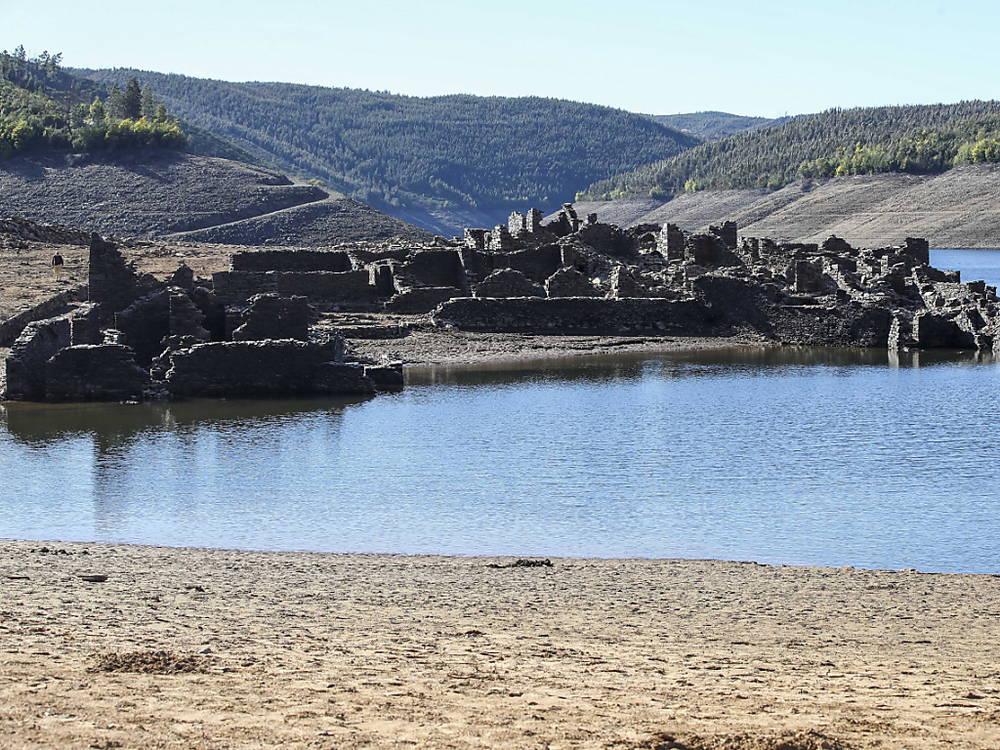
“I’ve never seen that before!” , said Carlos Berdigao, 76, who regularly comes to fish on the banks of the Zezere River. The river is surrounded by large strips of yellow earth cracked by the drought that hit the Iberian Peninsula this winter.
In front of him, the ruins of Vilar, an ancient stone village that was flooded by the river after the construction of a large dam nearly 70 years ago, appeared for a few weeks. It can be seen again due to the very low water level.
Spain, like neighboring Portugal, is experiencing an early and severe drought this winter due to the low rainfall recorded in January, which is already the second driest month since 2000 on the Iberian Peninsula, according to the two countries’ meteorological agencies.
Ricardo Dios, a climatologist at the Portuguese Institute of the Sea and Atmosphere (IPMA) notes that this drought is exceptional “in terms of its intensity, magnitude and duration”. In Spain, “in January, it rained only a quarter of what it should have rained at this time,” explains a spokesperson for the Spanish meteorological agency AEMET.
Global warming noted
This unusual situation actually led the Portuguese government to take emergency measures. In a country where nearly 30% of the energy consumed is of hydraulic origin, the authorities were forced at the beginning of February to announce the suspension of hydroelectric production from five dams ‘to preserve the quantities needed for public supply’.
On the other side of the border, Spain’s Agriculture Minister, Luis Planas, expressed “concern” about the situation on Wednesday. According to the Spanish authorities, the levels of water reservoirs, the supply of which is essential for agriculture, are less than 45% of their capacity, and the most affected regions are Andalusia (south) and Catalonia (northeast).
Alternating between dry and rainy years is normal in southern Europe, but “we notice a decrease in the proportion of rainy years recently”, emphasizes Felipe Duarte Santos, a researcher at the Lisbon School of Sciences and an environmental specialist, who refers to global warming. .
He explains that these droughts are “one of the most serious consequences of climate change”. According to him, “Until we drastically reduce our greenhouse gas emissions, the problem will continue to arise.”
/ ATS




.jpg)

